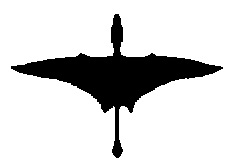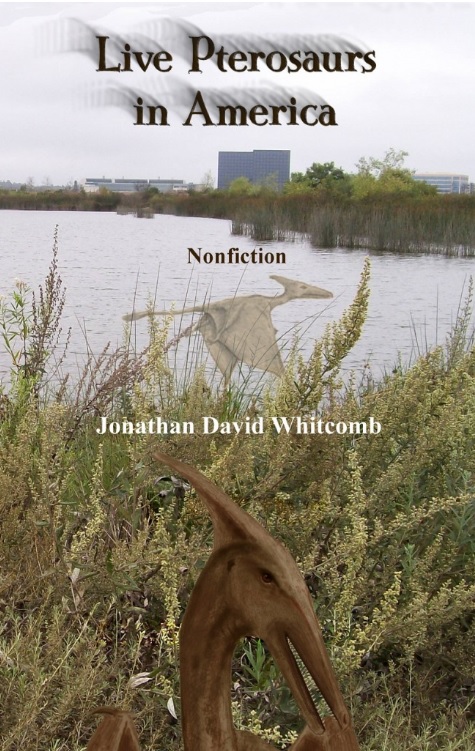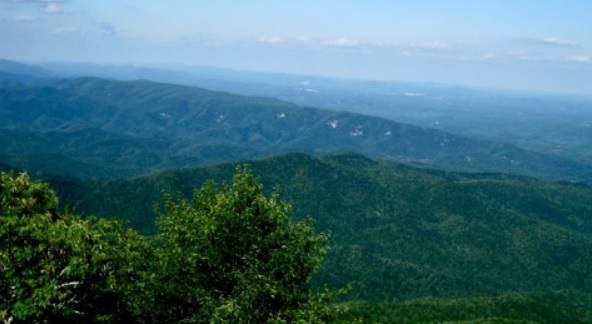By the nonfiction cryptozoology author Jonathan Whitcomb
UPDATE: “https” has been added to the links on this post (about long-tailed modern pterosaurs). This demonstrates that those posts and pages are safe (internet security).
* * *
For many years, many scientists have assumed that the Rhamphorhynchoidea suborder of pterosaurs was an early “primitive” type, ancestral to the Pterodactyloidea (the shorter tailed ones depicted in movies). Yet modern sightings of long-tailed featherless flying creatures suggests many older ideas need to be examined in a new light. Remember that real science allows progress in discoveries, allowing new interpretations as well.
The point comes from the many eyewitness sighting reports from around the world.

Two apparent “pterodactyls” observed in Cuba, in 1971, by Eskin Kuhn, who drew the sketch
From nonfiction book Searching for Ropens and Finding God (4th edition)
“Before scientists created words like Rhamphorhynchoid for long-tailed pterosaurs, common folk used the word dragon for large destructive creatures, including those with long tails and wings but no feathers.” (page 8)
“Maybe some stories of fire-breathing flying dragons were mostly based on giant bioluminescent Rhamphorhynchoid pterosaurs. That’s what I believe.” (page 9)
“Prior to September of 2004, I had assumed what other ropen investigators had assumed regarding two pterosaur types: Rhamphorhynchoids, small and long-tailed, rarely have head crests; Pterodactyloids, large and short-tailed, commonly have head crests. But this perspective, based on standard knowledge of pterosaur fossils, by the end of 2004 we found was too simplistic. [regarding modern sightings]” (page 26)
“The interviews revealed many details about the ropen and gave us hope that future investigators may videotape and photograph a ropen by camping near Lake Pung. I believe these testimonies suggest this creature is a Rhamphorhynchoid pterosaur, in spite of the giant size.” (page 82)
“Guessman estimated the distance: nose-to-tail length was eleven feet. From thirty-four silhouettes of bats, birds, and pterosaurs, Ragu chose the Sordes pilosus, a Rhamphorhynchoid (“basal”) pterosaur.” (page 96)
“What about the tail? When asked about its movement, villagers said that it never bends; Dickson, however, added a critical detail: The tail is stiff except where it connects to the body. . . . Guessman was thrilled, for pterosaur fossils indicate that the tail could not bend much except at a few vertebrae near where it connected to the body. Guessman took this as strong evidence that the ropen is a Rhamphorhynchoid pterosaur.” (page 98)
“I analyzed data from the late-2012 compilation of more-credible sightings and learned that 41% of eyewitnesses saw a long tail and only 2% noticed the absence of one. I know that leaves 57% of the 128 reports in doubt regarding that one evidence for Rhamphorhynchoids, but a twenty-to-one ratio leaves no doubt: Long tails dominate.” page 178)
Apparent Sordes Pilosus of Umboi Island

Silhouette chosen by two native eyewitnesses on Umboi Island, Papua New Guinea
In the second ropen expedition of 2004 (led by David Woetzel and Garth Guessman), several natives were interviewed, eyewitnesses who could have seen the creature well enough to choose from among 34 silhouettes shown to them by the two Americans. Yet when I examined the reports brought back to the United States by Guessman, it appeared to me that only two of the native eyewitnesses had good-enough views to reliably choose which image was closest to what was observed. Those 34 silhouettes, by the way, were of birds, bats, and pterosaurs.
Jonah Jim and Jonathan Ragu both choose the image of a Sordes pilosus, which is a Rhamphorhynchoid pterosaur. That appears to relate to the three eyewitness reports from my own expedition on Umboi, a bit earlier in 2004, when both a long tail and “diamond” were mentioned (Gideon Koro, Wesley Koro, and Mesa Augustin).
Those interviews in Papua New Guinea in 2004 do not scientifically prove the ropen is very closely related to the Sordes pilosus, but it gives strong cryptozoological evidence that it may be related to that pterosaur known from fossils.
###
.
End of tail on Rhamphorhynchoid
. . . a reference to what I have long presented as evidence for a Rhamphorhynchoid tail in featherless flying creatures that are observed worldwide: a structure at the end of a long tail, sometimes called a “diamond.”
The strange creature flew gracefully over the highway, right in front of the car Susan Wooten was driving to Florence, South Carolina. Other drivers stopped their cars on the side of the road (in the general area of Bishopville) but Susan drove on . . .
According to at least a couple of key eyewitnesses, it is horizontal. Patty Carson was sure of this in [creature] she had observed in Cuba in 1965; an anonymous eyewitness in Lakewood, California, was sure of this in the “dragon” she had observed on June 19, 2012, at mid-day. Both of these persons had a close encounter in clear daylight.
How often we’ve been taught that all dinosaurs and pterosaurs became extinct millions of years ago, as if that were proven! But what if some are still living? Before you dismiss the concept of a modern pterosaur (in particular, of a long-tailed featherless Rhamphorhynchoid), consider the many eyewitness testimonies of those flying creatures.
Nonfiction Books Mentioning Non-Extinct Pterosaurs
. . . the ground was difficult to be passed over, because of the multitude of serpents . . . some of which ascend out of the ground unseen, and also fly in the air, and so come upon men at unawares . . . [Moses led an army from Egypt before he became a prophet]
****************************************************************************************************************************
 Live Pterosaurs in America – true-nonfiction by Jonathan Whitcomb
Live Pterosaurs in America – true-nonfiction by Jonathan Whitcomb
This cryptozoology book about extant pterosaurs is probably both the most popular and highest rated nonfiction, on this subject, on Amazon. One critic mentioned its weakness: It gives limited space to disproving extinction ideas; it simply reveals to the readers what Americans have encountered. Here’s an example of part of one eyewitness report:
In July of 2008, I received a phone call from a man who reported a very large flying creature, seen one year earlier, in Orange County, less than one mile north of the University of California at Irvine. He described the dark gray or black animal as 30 feet long, with 15-16 feet of that being a tail. He saw the creature fly “at low altitude,” in front of his car, over the road (Campus Drive), into the San Joaquin Wildlife Sanctuary, in daylight.
.





